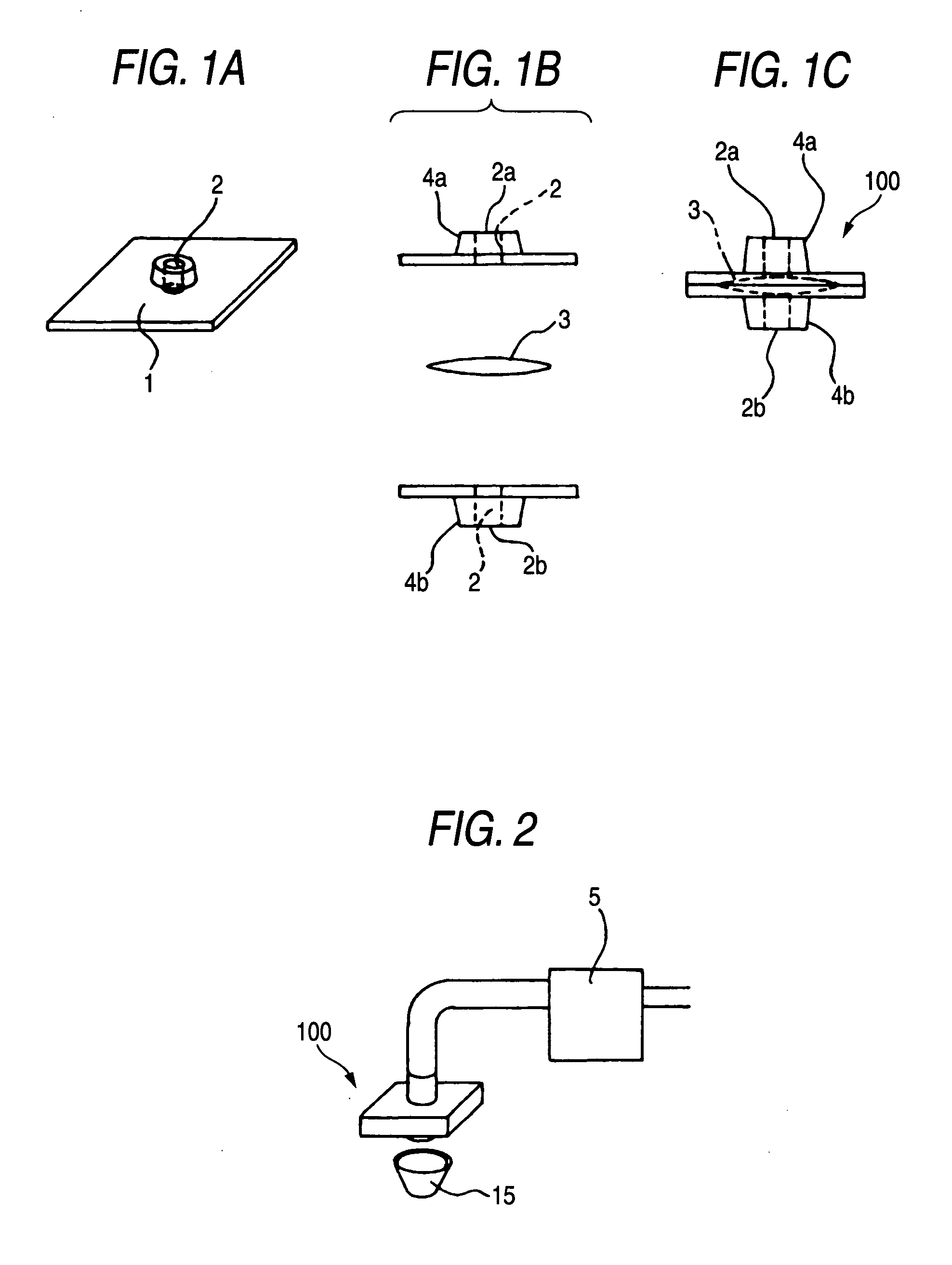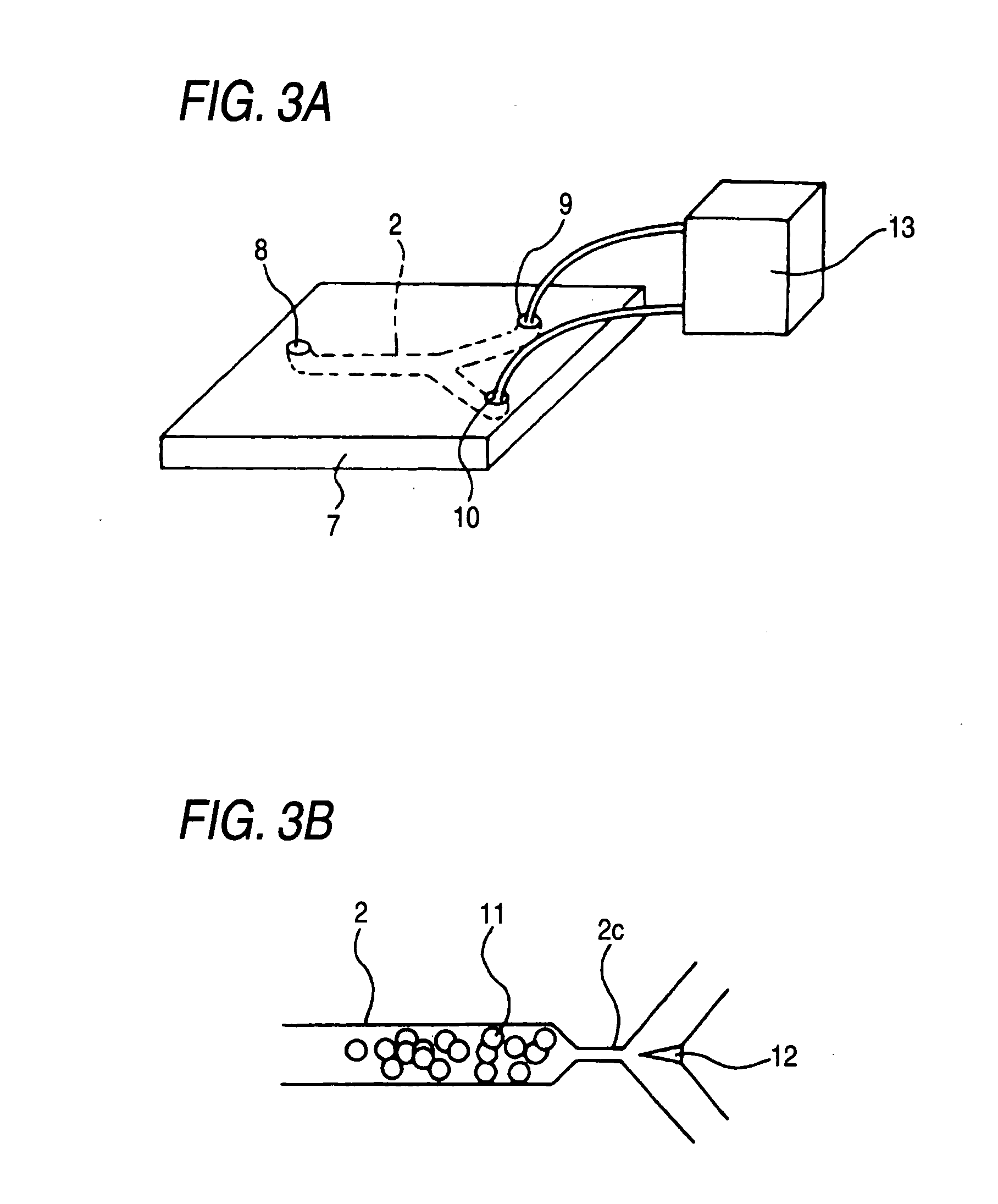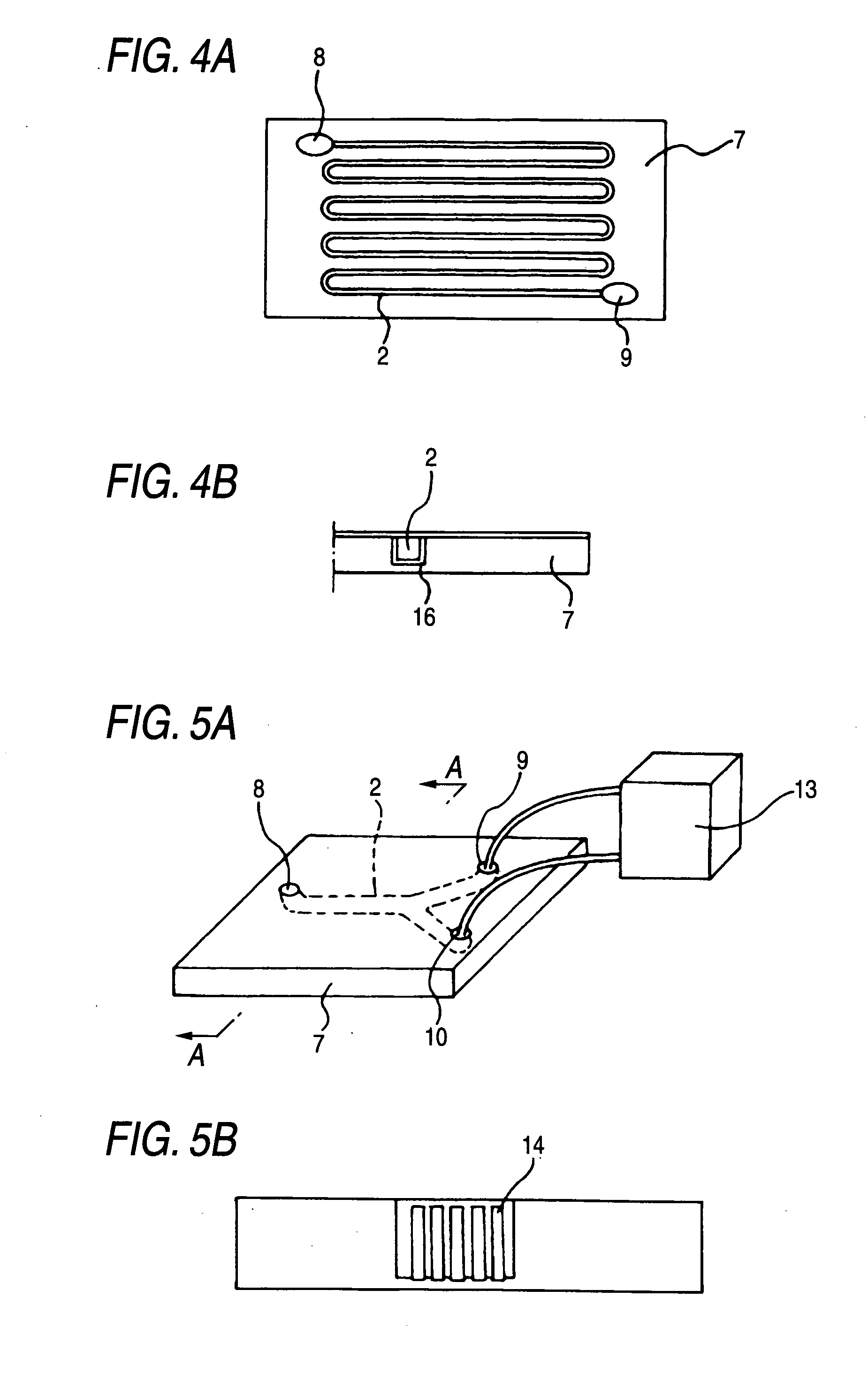Microdevice for performing method of separating and purifying nucleic acid
a nucleic acid and micro-device technology, applied in the field of micro-devices for performing a method of separating and purifying nucleic acid, can solve the problems of causing contamination or false positive, cumbersome operation for isolation and purification thereof, and consuming a lot of tim
- Summary
- Abstract
- Description
- Claims
- Application Information
AI Technical Summary
Benefits of technology
Problems solved by technology
Method used
Image
Examples
example 1
Microdevice Receiving Nucleic Acid-Adsorbing Porous Membrane as Nucleic Acid-Adsorbing Support
(1)-1. Production of Device for Separating and Purifying Nucleic Acid
[0189] As shown in FIG. 1A, in the center of a PDMS (polydimethylsiloxane)-made flat plate 1 with a size of 10 mm×10 mm×3 mm, a vertical channel 2 with an inner diameter of 500 μm was produced to prepare chips 4a and 4b shown in FIG. 1B. As shown in FIG. 1B, a nucleic acid-adsorbing porous membrane 3 with a diameter of 1 mm was sandwiched by two chips 4a and 4b, and these were press-bonded under heat to produce a microdevice shown in FIG. 1C. In the above, a regenerated cellulose was used as the nucleic acid-adsorbing porous membrane 3.
(1)-2. Preparation of Nucleic Acid-Solubilizing Reagent and Washing Solution
[0190] A nucleic acid-solubilizing reagent solution and a washing solution according to the formulation shown in Table 1 were prepared.
(Nucleic Acid-Solubilizing Reagent Solution)Guanidine hydrochloride (prod...
example 2
Microdevice Receiving Bead as Nucleic Acid-Adsorbing Support
(2)-1. Production of Nucleic Acid-Adsorbing Bead
[0198] Polystyrene-made beads of φ=10 μm were dispersed in a methylene chloride solution of triacetylcellulose and dried. The dried beads were washed with water, dispersed in an aqueous 0.4 mol / L NaOH solution, stirred at room temperature for 30 minutes, filtered and again thoroughly washed with water.
(2)-2. Preparation of PDMS Concave Mold
[0199] SU-8 which is a thick-film photoresist was spin-coated on a silicon wafer to a film thickness of 100 μm and after preheating at 90° C. for 1 hour, irradiated with UV light through a mask (not shown) having a channel pattern corresponding to FIG. 3A, and the portion irradiated with light was cured at 90° C. for 1 hour. The uncured portion was dissolved and removed with propylene glycol monomethyl ether acetate (PGMEA) and after washing with water and drying, the wafer was used as a silicon wafer / SU8 convex mold.
[0200] Subsequent...
example 3
Microdevice with Channel Made of Nucleic Acid-Adsorbing Support
(3)-1. Production of Device for Separating and Purifying Nucleic Acid
[0205] A channel 2 of 100 μm×100 μm was produced to a length of 150 mm for a PDMS (polydimethylsiloxane)-made device with a size of 20 mm×30 mm×3 mm shown in FIG. 4A, in the same manner as in Example 2. The inner side of the channel 2 was, as shown in FIG. 4B, coated with dextrin. A driving system for flowing a liquid from the injection port 8 of the thus-created channel was provided to enable supplying a liquid to the channel and on the other side, a discharge and recovery port 9 allowing for discharge of the liquid and an air vent were provided, thereby producing a microdevice.
(3)-2. Operation of Separating and Purifying DNA
[0206] The nucleic acid-solubilizing reagent (10 μl) prepared in Example 1 and 1 μl of a protease (“Protease” Type XXIV Bacterial, produced by SIGMA) solution were added to 10 μl of a human whole blood test sample and incubat...
PUM
| Property | Measurement | Unit |
|---|---|---|
| weight % | aaaaa | aaaaa |
| equivalent diameter | aaaaa | aaaaa |
| water-soluble | aaaaa | aaaaa |
Abstract
Description
Claims
Application Information
 Login to View More
Login to View More - R&D
- Intellectual Property
- Life Sciences
- Materials
- Tech Scout
- Unparalleled Data Quality
- Higher Quality Content
- 60% Fewer Hallucinations
Browse by: Latest US Patents, China's latest patents, Technical Efficacy Thesaurus, Application Domain, Technology Topic, Popular Technical Reports.
© 2025 PatSnap. All rights reserved.Legal|Privacy policy|Modern Slavery Act Transparency Statement|Sitemap|About US| Contact US: help@patsnap.com



